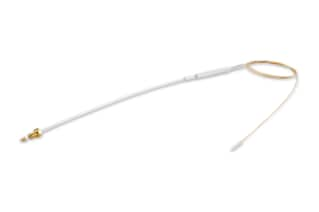
ACQUITY UPLC M-Class Columns are designed for optimal performance for nano- to micro scale liquid chromatographic separation, offering the highest possible sensitivity, resolution and reproducibility for biomarker discovery and protein identification and characterization. As the 75µm to 180µm ID columns are fritted with a novel frit technology, they are able to withstand 15kpsi operating pressure and handle pressure fluctuations during injection extremely well and thus provide superior longevity. In order to achieve maximum performance, it is important to ensure that proper connections are made to minimize peak tailing and poor efficiency. This specific offering contains Waters patented BEH Technology 130A pore, C18, 1.7um particles. Each batch is specifically QC tested using a gradient separation of a tryptic digest of cytochrome c to before being QC accepted as a Peptide separation column.
|
Chemistry |
C18 |
|
Separation Mode |
Reversed Phase |
|
Particle Substrate |
Hybrid |
|
pH Range Min |
1 pH |
|
pH Range Max |
10 pH |
|
Maximum Pressure |
15000 psi (1034 Bar) |
|
Endcapped |
Yes |
|
Silanol Activity |
Low |
|
Particle Shape |
Spherical |
|
Particle Size |
1.7 µm |
|
Endfitting Type |
Valco(male)|360um Open |
|
Pore Size |
130 Å |
|
QC Tested |
Peptide |
|
Format |
Column |
|
Surface Area |
185 |
|
System |
Nano/Micro |
|
Particle Technology |
BEH |
|
USP Classification |
L1 |
|
Inner Diameter |
100 µm |
|
Length |
100 mm |
|
Carbon Load |
18 % |
|
UNSPSC |
41115709 |
|
Application |
Peptide |
|
Brand |
ACQUITY UPLC M-Class |
|
Product Type |
Columns |
|
Units per Package |
1 pk |

ACQUITY UPLC M-Class Peptide BEH C18 Column, 130Å, 1.7 µm, 100 µm X 100 mm, 1/pk
Add the ACQUITY UPLC M-Class Column to your lab as they are designed for optimal performance for nano- to micro-scale liquid chromatographic separation. The lab equipment offers the highest possible sensitivity, resolution, and reproducibility for biomarker discovery and protein identification and characterization. The lab equipment is compatible with nanoACQUITY UPLC® Systems.
The ACQUITY UPLC M-Class Column is manufactured to strict standards and fritted with a novel frit technology. These exacting standards, combined with the column’s chemistry enable it to be able to withstand high pressures of up to 15,000 psi (1,000 bar). It can also handle pressure fluctuations during injection extremely well and thus provides superior longevity.
To achieve maximum performance, it is important to ensure that proper connections are made to minimize peak tailing and poor efficiency. This is important as compared to standard flow chromatography, successful day-to-day performance of capillary-flow systems can require extra attention to detail. The product listed here contains Waters patented BEH Technology 130Å pore, C18, 1.7um particles, to deliver superior performance. Each batch of the packing material used in the manufacturing of the column is QC tested using a gradient separation of a tryptic digest of cytochrome c before being QC accepted as a Peptide separation column.
To make sure you receive only quality equipment, each ACQUITY UPLC M-Class Column is individually tested to ensure that it passes stringent quality control. The column is manufactured in Waters ISO 9001 certified plant, in a carefully monitored and strictly controlled environment.
To find out which products work best in conjunction with the ACQUITY UPLC M-Class Column, browse through our website, which contains details of our extensive product portfolio. It also enables you to shop for lab equipment.
You may want to explore the MassPREP Enolase Digestion Standard which is useful in a variety of applications that include performance evaluation of HPLC columns, high-performance liquid chromatography, and mass spectrometry instrumentation used for the analysis of this class of compounds.
What Sample Preparation Considerations Should Be Made?
Samples may comprise buffers and residual reagents originating from authorized digestion procedures. It is imperative to ensure that the sample does not incorporate additional reagents, denaturants, detergents, lipids, or particulate matter. Notably, samples harboring a substantial quantity of undigested protein per injection have been observed to curtail or abbreviate column lifetimes, contingent upon the injected volume and column diameter. Hence, adherence to appropriate sample preparation protocols assumes utmost significance to mitigate such risks.